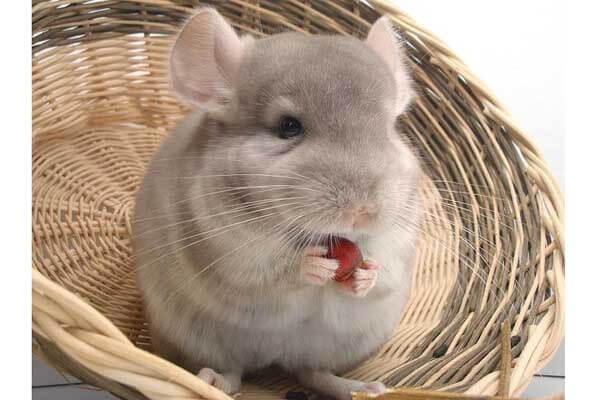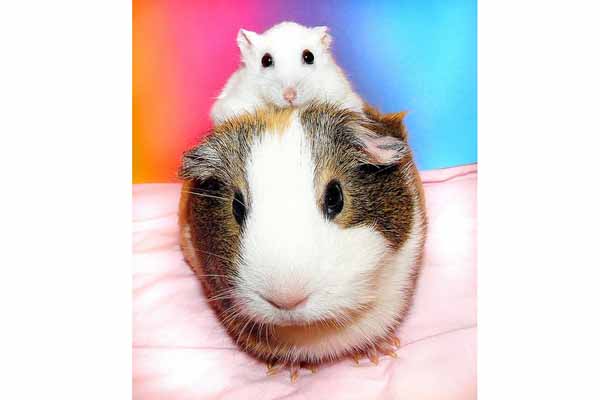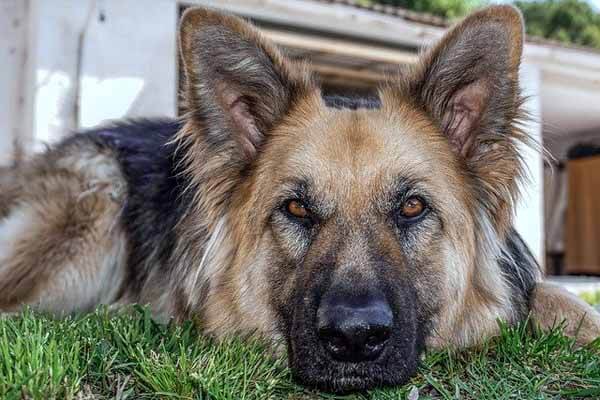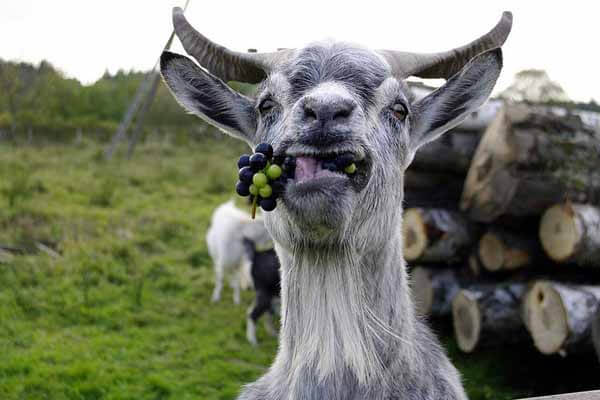Give your new puppy the gift of future health and proper growth by following these four principles.
When your puppy was weaned from his perfect diet of mother’s milk, the responsibility for fulfilling his nutritional needs fell to you. Give your new friend the gift of future health and proper growth by feeding him exactly the way he needs to be fed. To do this, you need to know four basic principles of puppy nutrition:
1. Puppy food by any other name could be the same.
A good growth formula doesn’t have to come in a bag labeled “Puppy Food,” although foods marketed for puppies are fine. “One of the myths is that puppies require [nutrients] adults don’t,” said Dan Carey, DVM, director of technical communications and a nutrition scientist at the Iams Co. “Puppies need all the same things adults need; they just have higher calorie requirements and, in the case of large dogs, lower calcium requirements.” Many foods are not only adequate but excellent for puppies as long as they have been tested for growth, he said, recommending that owners look on the package near the guaranteed analysis statement for information about the food being found “adequate for growth” or adequate for all life stages.
2. Do a balancing act.
The proper balance of nutrients is the most crucial aspect of a puppy’s diet, which is why supplementation (with multivitamins, extra calcium, or the latest popular vitamin or mineral) should be followed only when recommended by your veterinarian for a specific medical condition. Excessive table scraps and homemade diets can also upset this balance.
3. Understand less is more, more or less!
Puppies need to eat far more calories per pound than an adult dog at least three times as much as an adult of the same weight. They also need to eat more frequently at least three times per day up to 16 weeks of age. Getting enough food is a challenge for some puppies. Others would eat all day long if given the chance, and obesity or a too-quick growth rate would result.
What’s a new puppy owner to do? “The food guide on the dog food bag is a good starting point because those amounts have been carefully researched,” Carey said. “Then experiment, slowly increasing the amount of food as your puppy grows.” (Remember suggested amounts are for an entire day. Divide by three for single-feeding amounts.) Guidelines on the bag are only guidelines, however. “That’s just a starting point,” said Quinton R. Rogers, Ph. D., and a companion animal nutritionist at the University of California, Davis. “You need to experiment. Feel their ribs. If you can feel them very easily, the puppy is too thin. If you can’t feel them, your puppy is too fat.”
The size of your puppy will be as an adult adds another important consideration. If you have a small breed, a dog that will be 20 pounds or less as an adult, every bite counts. “Little puppies need a very dense, high-energy food,” Carey said. Small breeds have faster metabolisms than other puppies, so they need to be fed even more often — four times a day if possible.
The latest research in puppy nutrition has focused on large and giant breeds, dogs that will be 65 pounds or larger as adults. According to a study by Richard Kealy, Ph.D., a nutrition scientist at Ralston Purina Co. limiting food consumption in puppies resulted in a significant decrease in the incidence of hip dysplasia later in life, and quick growth rates in large breeds due to excessive calorie consumption produced weaker, more porous skeletons. The Iams Co. and others have researched excess calcium in the diets of large and giant breeds resulting in bone problems, too.
How much should you feed your large-breed pup? Just enough to maintain a slim, hourglass shape when viewed from above, Kealy said.
Afraid your giant breed won’t reach its potential? Don’t worry. “It’s not true that underfeeding will restrict growth,” Rogers said, explaining growth will be slower, but genetics, not diet, determines ultimate size. “In any species, we don’t know if maximum growth is ever good, and in several species, it has been proven that restricted growth extends life span and improves health.”
4. Play switcheroo.
You may have heard you should never switch your dog’s food because of the risk of stomach distress or that you should never feed table scraps. Not true, Rogers said. “You shouldn’t feed more than 10 percent of your dog’s calories as scraps or treats, but don’t worry about occasionally offering healthy table scraps.”
Rogers suggested rotating commercial foods. “With the uncertainty of not yet knowing all the information about canine nutrition, switching dog foods every so often among those that are well tested is probably a good idea. You’ll be sure to get a variety of ingredients and not overdo any one nutrient, either.”
Once you’ve found a quality food that meets all your dog’s nutritional requirements, there’s no need to vary brands, Carey said. “If a food has been tested and proved adequate for growth and your dog does well on that food, there is no reason to feed it anything else.” Pick the approach that works for you and your puppy. If you do vary foods, watch fat content. It can vary from 8 percent up to 21 percent in some premium brands.
Knowing the basics of puppy nutrition helps you be the best puppy companion you can be. Give yours the right amount of balanced food, add a little variety, and monitor your pup to make sure it thrives. And don’t forget the most important nutrient of all, the one your puppy can’t get too much love!
Proper puppy nutrition is important in a variety of ways. Besides promoting good health, it also benefits the digestive system and skin. Your puppy’s overall health will benefit as well. It will live longer and have a healthier coat. It will also have a more appealing look. Moreover, he will enjoy better digestion and skin. Here are some benefits of a proper diet for your dog.
Raw foods are packed with nutrients and vitamins. These raw foods do not go through the cooking process, which damages their nutritional content. Moreover, raw food is full of antioxidants and phytonutrients. A balanced diet of fresh fruits and vegetables will provide your dog with the necessary nutrients to help him or she grows healthy. Various types of vegetables and fruits have different vitamins and minerals. They are rich in vitamin A and vitamin C. Leafy greens are also loaded with vitamins and minerals.
A puppy needs more calories per pound than an adult dog. A pup needs three meals a day until 16 weeks of age. Puppies are naturally hungry and may be difficult to feed. However, some may find it difficult to eat enough. Others would eat all day long if they could. This can lead to obesity and rapid growth, which are not good for your dog’s health. A well balanced diet provides your puppy with the right nutrients needed to grow healthy and strong.
The right nutrition for your pup is vital. The calorie requirements of puppies are three times higher than that of an adult dog. In addition to this, proper nutrition allows your puppy to grow healthy bones. In addition, proper food intake will help your puppy develop quickly, so you don’t have to worry about overfeeding. Lastly, a balanced diet can prevent many health problems in the long run. Regardless of your dog’s breed, you should make sure they have enough freshwater to drink before bedtime.
When choosing a food for your puppy, it is important to ensure a proper balance of nutrients. Supplements should only be given when recommended by your veterinarian. Never give your puppy table scraps and homemade foods. It will cause your puppy to overeat, which will lead to obesity. Similarly, excessive amounts of table scraps can upset the balance of nutrients in your puppy’s diet. If your dog is hungry, he will tend to overeat.
A healthy dog will have a shiny coat and healthy skin. A puppy that is eating a nutritious diet will have a healthy coat and skin. A dog with healthy skin will have hair that is sheath and shiny. A puppy with dry and scaly skin will have dry and brittle hair. Foods that contain sufficient amounts of omega-3 fatty acids are anti-inflammatory, reducing itching and irritation in the dog.
A balanced diet will allow your puppy to grow healthy and strong. The main reason to include meat is that it contains high-quality protein, which is essential for good health. Meat is an essential part of a puppy’s diet. The best source of protein is raw muscle meat. It is also rich in vitamins and minerals. A balanced diet is essential for a puppy’s growth and well-being. You should consider giving your puppy raw meat at least three meals a day until it is around 16 weeks old.
Meat is an important part of a puppy’s diet. The best sources of protein are raw muscle meats. These meats contain essential fats and vitamins, which are essential for healthy growth. A balanced diet also ensures that your puppy gets enough micronutrients from all of its food. A balanced diet will also promote your puppy’s healthy development. For this reason, a balanced diet is an essential component of a healthy diet.
Fresh meats are an important part of your puppy’s diet. They are a great source of essential vitamins and minerals. Your puppy’s diet should include a variety of meats. You should also feed your puppy a variety of fresh meats. A varied diet includes fruits, vegetables, and whole grains. It is also important to keep in mind that raw meats contain more nutrients than cooked meats.









Animals just like us, need a certain combination of protein, carbohydrates, fats, vitamins, minerals, and water every day in order to function normally. Therefore, pet food manufacturers like Hills Pet Nutrition and Royal Canin, work hard to determine the exact formula that goes into their pet foods. This way, they can provide everything your pet needs daily. There are specific foods designed to help with specific health conditions. For example, for puppies, g 40 eriatric pets, and pets who might have heart or kidney disease. Each nutrient in your pet food has a purpose.